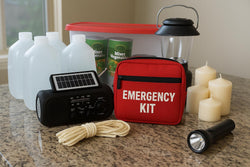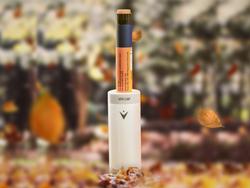Tempramed Blog
Cold Weather and Your Medication: How Winter Temperatures Affect the Potency of Insulin and Ozempic™

As the cold weather sets in and winter coats become a necessity, it's crucial for insulin pen users and people who use Ozempic to consider how plummeting temperatures can impact the effectiveness of their medications. Have you ever wondered how the cold weather can affect the potency of your insulin and Ozempic pens? Here we give you some insights into how your valuable medications are affected and the best ways to safeguard them during these cold winter months.
The Chilling Truth About Cold Temperatures
Cold weather can be harsh, not only on our skin but also on medications like insulin and Ozempic.
Here's how:
1. Temperature Sensitivity
Both insulin and Ozempic are extremely sensitive to temperature fluctuations. Extreme cold can cause these medications to lose their potency, making them less effective in managing blood sugar levels. Freezing for only a couple of minutes can cause irreparable changes to these medications.
2. Changes in Viscosity
Cold temperatures can cause these medications to become thicker or more viscous, making it challenging to inject them accurately. This can lead to dosage errors and compromised treatment outcomes.
Protecting Your Medications
The longer the exposure to extreme temperatures, the less effective your medication becomes.
Now that you understand the potential risks of cold weather, let's explore some practical tips to ensure your insulin and Ozempic remain fully potent and effective:
1. Storage Solutions
- Any unopened pens should be kept in a refrigerator but not towards the back of the fridge as very often the back of the refrigerator can cause freezing. Do not use insulin that has been frozen.
- Once an insulin or Ozempic pen is opened, it should be kept at room temperature for up to 30 days before it loses efficacy. The temperature should remain between the ideal insulin temperature range of 68 - 86 F. The only way to achieve this in the cold weather is to use a clinically proven, recommended medication storage solution.
2. Travel Considerations
When traveling during winter, make sure to carry your medications in a storage device to maintain their ideal insulin temperature range.
3. Plan Ahead
- Stock up on your medications before the cold weather hits to minimize the need for frequent trips to the pharmacy.
- In case you're going to be outdoors for an extended period, carry your insulin or Ozempic in a storage device that is guaranteed to shield them from the cold no matter what. If you are going to be in or out, your medication needs to be shielded from all extreme temperatures.
Consult Your Healthcare Provider
Always consult your healthcare provider or pharmacist for personalized advice on how to store and manage your insulin and Ozempic during cold weather. They can provide you with specific recommendations tailored to your needs. The VIVI Cap temperature shield (insulin cooler) is the only storage device developed with space technology and recommended by healthcare professionals.
In Conclusion
While winter weather can be challenging for insulin pen users and Ozempic takers, it doesn't have to jeopardize your treatment. By understanding the impact of cold temperatures and taking proactive measures to protect your medications, you can ensure that they remain potent and effective throughout the winter season.
Remember, your health is of utmost importance, and with the right precautions, you can continue to manage your condition successfully, even in the coldest of weather. VIVI Cap is an insulin travel cooler – the ultimate safeguard for your precious medication in the ideal insulin storage temperature. Ensure each of your injections delivers its full, effective potential.
Stay warm, stay healthy, and take care of yourself!
Sources:
- American Diabetes Association - Storing Insulin (https://www.diabetes.org/resources/know-your-rights/discrimination/safely-storing-insulin)
- Novo Nordisk - Ozempic Storage (https://www.ozempic.com/about-ozempic/how-to-store- ozempic.html)




